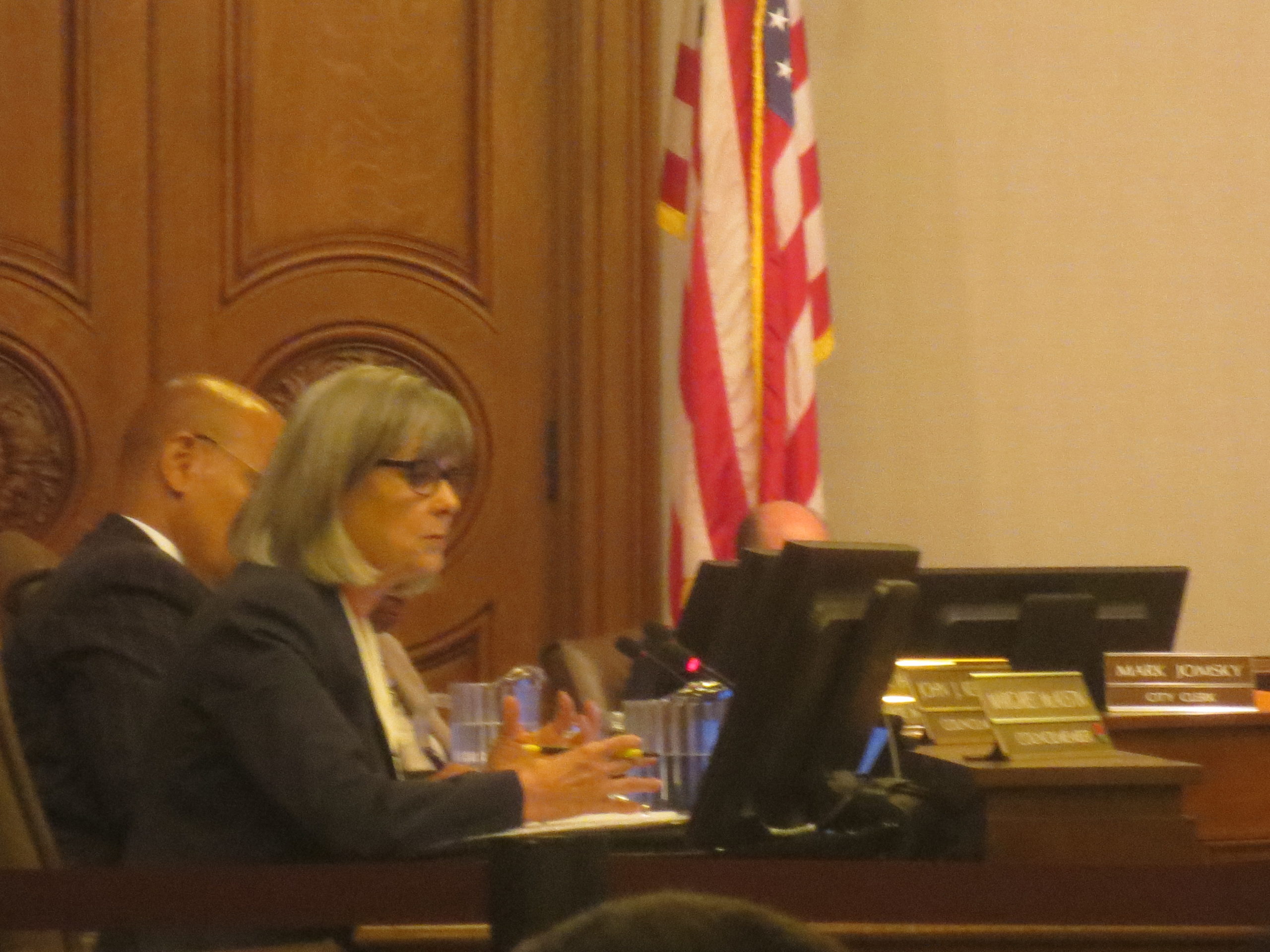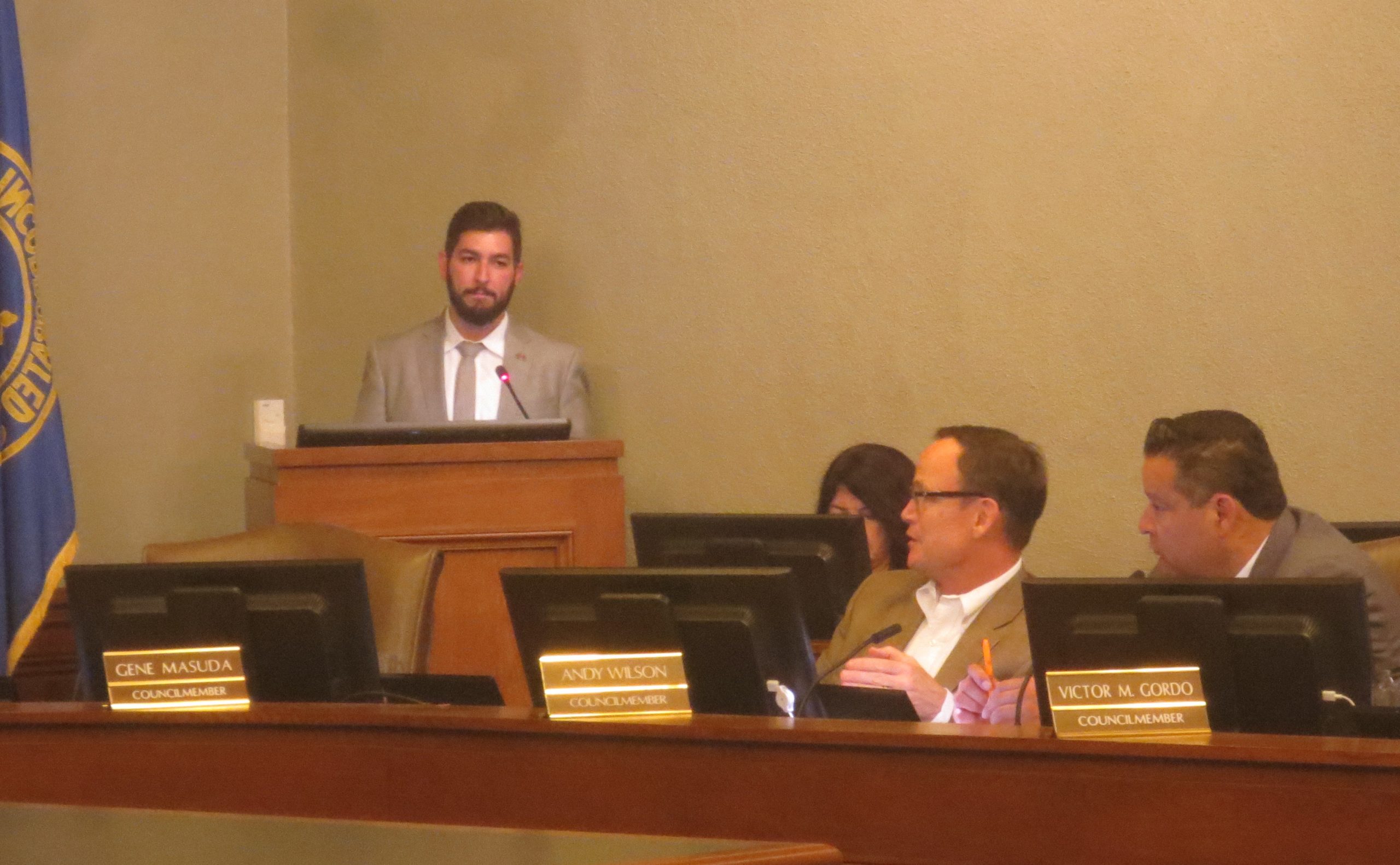
By Evan V. Symon
The Pasadena City Council changed the requirement for new residential building projects Monday night, increasing the inclusionary percentage for very low, low, and middle income renters from 15% to 20%.
The debate and vote over the inclusionary housing changes started from the very beginning of the meeting. Numerous residents testified about not being able to afford rent or being moved out without cause. Many residents tied in their stories with new developments and the lack of affordable housing.
After public comments, the hearing over inclusionary housing amendments and concessions began. Director of Planning and Community Development David Reyes and Senior Planner Andre Sahakian spoke first, giving details on the plan. While current projects ask for 15% affordable units in new residential projects with 10 or more units, there was a proposal from the planning commission for 25%, with the staff recommendation of the Department being 20%. Reyes said of the proposals that 20% was stable, but 25% was not.
The elimination of trade downs were also brought to attention. It was shown how one very low income unit was worth two middle income units for developers, making it more attractive for developers to build fewer units for lower income people, while at the same time offering lower income units to people who have greater demand for them.
Many council members expressed concern over certain aspects. Councilwoman Margaret McAustin expressed concern over unit sizes. “Almost all of the units we’ve developed have been one or two bedrooms,” stated Councilwoman McAustin. “And the problem is that we’re not doing anything for families. Families need three and four bedroom units. I think we ought to consider that if a developer provided housing with three bedrooms or more that their inclusionary housing could be reduced to 15%. It’s just a mark we’ve not been hitting, and we’re seeing families leave Pasadena all the time. Only 5% of all inclusionary units that have been produced have been three or more bedrooms. We need to provide more of an incentive to provide more of what we want.”
Reyes noted “No matter what we do tonight, people can still take advantage of the state law. We can’t change that fact. But what we’re hoping to do is create something that’s more attractive than what the state law is today.”

Councilman John Kennedy brought up the issue of how many low income units were being built, with Director Reyes responding that even though they were ahead of the housing cycle on units built, they were behind on the amount of low and very low income units built.
“We’ve got to do something more than we’ve done before and not just talk about moderate income.” Kennedy said to applause from the public seating area.
Councilman Victor Gordo pushed to preserve existing permanent housing instead of more development. Councilman Gordo also noted problems in that the in-lieu fee never covers cost of land acquisition and prevents units from being built naturally as development occurs. The meeting was then thrown to public comment.
Many neighborhood association representatives expressed their approval of the new housing development changes. Citizens also brought up concerns and proposed changes, including pressing for a 30% inclusionary rate, adding rent control provisions, eliminating just cause eviction, and the fear of losing their city’s identity.
Some also voiced their disapproval. Tom Piasky, CEO of the Building Industry Association of Southern California, was the most notable dissenter.
“We need more affordable housing,” stressed Piasky, “But raising inclusionary requirements is not how to get there. The policies would result in the reduction in number and nature of dwelling units within the city. This would be in violation of the city’s general plan.” Piasky went on to state that issues stemming from this would lead to greater car usage to find housing, impacting traffic and greenhouse gasses. Piasky also noted that those with middle-incomes would face higher rents due to the minimum price point being driven up.
When asked for solutions for affordable housing by Councilman Kennedy, Piasky responded that it’s headed in the right direction and that “You need to make it so that the developers can afford to do the project and provide additional affordable units.”
Piasky also noted that there is a housing crisis simply because they aren’t producing enough housing, and that a major reason for the housing that has gone up in Pasadena has been because of density bonus. He added, “If it wasn’t for the density bonus I’m not sure we would have produced all of those units.”
After public comment, the council debated the issue. Director Reyes was questioned on why they didn’t go farther with recommendations.
“If it’s not financially feasible then we’ll have no affordable,” Reyes responded. “So we kept that in mind when we did all of the recommendations and the studies.”
Issues over housing were also discussed. “It’s certainly right at the top of importance,” said Councilman Steve Madison. “Affordability. Housing. Homelessness. The growing gap of the haves’ and the have-nots is always at the top of the list.”
Councilman Madison also mentioned that the initial inclusionary housing ordinance was passed in September of 2001, and has not been revisited since 2013. He expressed concern on why nothing had been updated since then.
Councilman Kennedy, after mentioning the hardships his mother had living on only $440 a month, pushed for a portion of in-lieu fees going to extremely low income housing. “I would start at extremely low,” explained Councilman Kennedy.
Councilwoman McAustin asked to see if it was feasible to include more three bedroom and up units in the new inclusionary housing regulations. She further asked what they could do to get 25% requirements.
A vote was then called and was passed unanimously, with Councilmen Hampton and Masuda not voting due to being absent. The final vote raised the inclusionary housing requirement to 20%, got rid of the trade down system, created a concession menu for developers, and raised in-lieu fees.
Besides the inclusionary issue, the council also approved an urban wildlife plan for dealing with coyotes. In addition, public hearings on developments at 550-566 E. Colorado Blvd. and 127 and 141 N. Madison Ave. were tabled for later dates. A motion renewal over the property at 253 Los Robles Ave. was also pushed back. Council also listened to citizens concerned over testing and cleanup at a former Naval dump site at 3200 E. Foothill Blvd. No action was taken by the council over the site at the meeting.







